When it comes to ensuring the stability of your vehicle during turns or irregular road conditions, the sway bar (also known as a stabilizer bar) plays a critical role. The sway bar end links are vital components that connect the sway bar to the suspension system. Proper adjustment of these links is essential for maintaining good ride quality and vehicle handling.
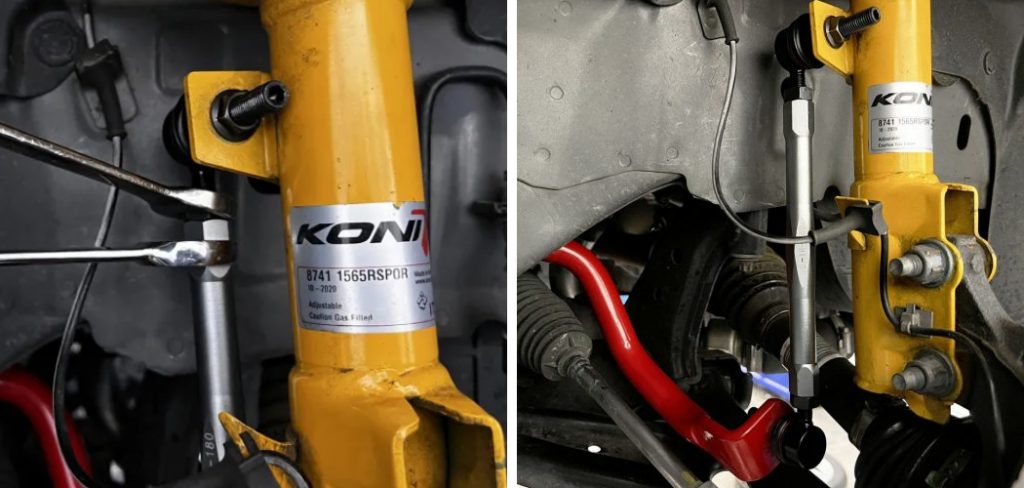
This guide on how to adjust sway bar end links offers a step-by-step approach to ensuring that your vehicle delivers optimal performance and safety on the road. Whether you’re a seasoned mechanic or a weekend DIY enthusiast, these instructions will help you keep your car running smoothly.
What is a Sway Bar End Link?
A sway bar end link is a suspension component that connects the sway bar to the rest of the vehicle’s suspension. It is made up of two metal rods with ball joints on both ends, allowing for flexibility and movement. The sway bar end links are responsible for transferring the load from one side of the suspension to the other during turns or when driving over uneven surfaces. This helps to keep the vehicle stable and prevents excessive body roll, providing a smoother and safer ride. A worn or improperly adjusted sway bar end link can result in poor handling and reduced stability on the road.
Signs of a Bad Sway Bar End Link
Knowing when it’s time to adjust or replace your sway bar end links is crucial for maintaining your vehicle’s performance and safety. Here are some signs that indicate a problem with your sway bar end links:
- Clunking or Rattling Noises From the Suspension When Driving Over Bumps or Making Turns
- Excessive Body Roll During Turns, Especially at Higher Speeds
- Uneven Tire Wear
- Vibration or Shaking in the Steering Wheel
If you notice any of these signs, it’s essential to inspect your sway bar end links and make necessary adjustments.
10 Step-by-step Guides on How to Adjust Sway Bar End Links
Step 1: Prepare Your Vehicle
Before you begin, park your car on a flat and level surface. Turn off the engine and engage the parking brake for safety. You may also want to chock the wheels to prevent any movement. It”s a good idea to wear safety gear such as gloves and eye protection. You will need a set of wrenches, sockets, and possibly a torque wrench. The correct size will vary depending on your vehicle, so consult the owner’s manual or reference guide. It’s also helpful to have a bottle of penetrating oil on hand in case any bolts are stuck.

Step 2: Locate the Sway Bar End Links
The sway bar end links are typically connected to the control arms or struts and are located near the wheels. They will have ball joints at both ends, with one end attached to the sway bar and the other to the suspension. Some vehicles may also have rear sway bar end links connected to the rear axle. However, the adjustment process will be similar for both front and rear sway bar end links. You may need to remove any wheel well covers or panels for better access.
Step 3: Inspect the End Links
Before making any adjustments, it’s crucial to inspect the condition of your sway bar end links. Look for signs of damage, such as rust, cracks, or loosened bolts. If you notice any issues, it’s important to address them before proceeding with the adjustment. The worn or damaged sway bar end links can significantly affect the stability and handling of your vehicle. It’s also a good idea to clean any dirt or debris from the end links to ensure proper adjustment. However, if the end links are too damaged, it may be necessary to replace them entirely.
Step 4: Release Any Pressure
If your sway bar end links have tension due to an uneven load, you will need to release it before making any adjustments. This is especially important if you’re working on the front sway bar end links, as the weight of the engine can cause tension. To release the pressure, carefully lift and support the vehicle with a jack under the frame or designated lifting point. Then, slowly lower the suspension using the jack until there is no more tension on the end links. But be sure not to lower it too much, as you still need the wheels on the ground for proper adjustment.
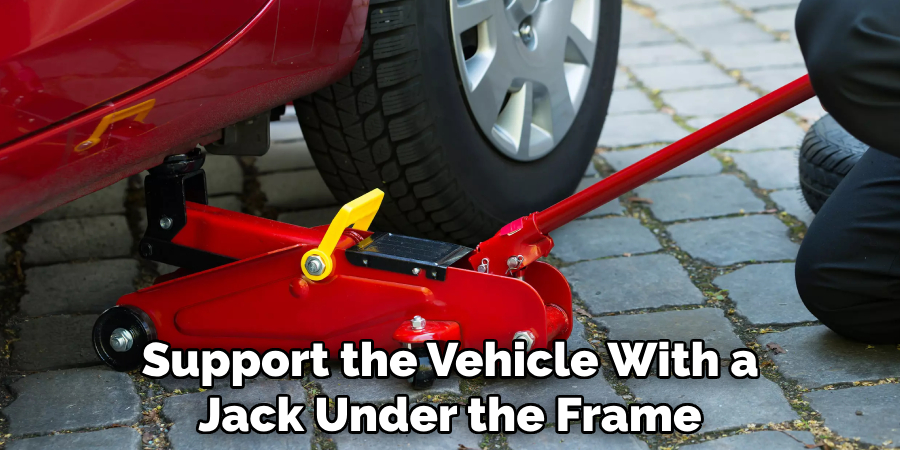
Step 5: Loosen the Bolts
Using an appropriate wrench or socket, loosen the bolts connecting the sway bar end links to the suspension and sway bar. If the bolts are stuck due to rust or corrosion, you may need to use penetrating oil and let it sit for a few minutes before attempting to loosen them again. It’s essential not to remove the bolts entirely, as you will need to reattach them once the adjustments are complete. It’s also helpful to keep track of which bolts go where so you can reattach them correctly.
Step 6: Adjust the Length of the End Links
Most sway bar end links have an adjustable middle section that allows you to change the link’s overall length. By turning this section, you can either lengthen or shorten the end links, which affects the sway bar’s tension. If your vehicle has adjustable end links, it’s essential to consult the owner’s manual or reference guide for the correct adjustment specifications. You can also use a torque wrench to ensure the end links are adjusted to the correct tightness.
Step 7: Measure the Distance
Using a measuring tape or ruler, measure and record the distance between both ends of the sway bar end links. This will help you ensure that both sides are adjusted evenly and maintain the proper balance on your vehicle’s suspension. There may be indicators on the end links to help you measure and adjust accurately. You can also use the old-end links as a reference if you are replacing them. If the measurements are off, make the necessary adjustments until they match.
Step 8: Make Adjustments
Based on your measurements, make necessary adjustments to the sway bar end links. If one side is longer than the other, use a wrench or socket to turn the adjustable middle section of the end link in either direction until both sides are equal in length. It’s important to make equal adjustments on both sides to maintain balance and stability. The recommended adjustment specifications will vary depending on your vehicle, so be sure to consult the owner’s manual or reference guide.
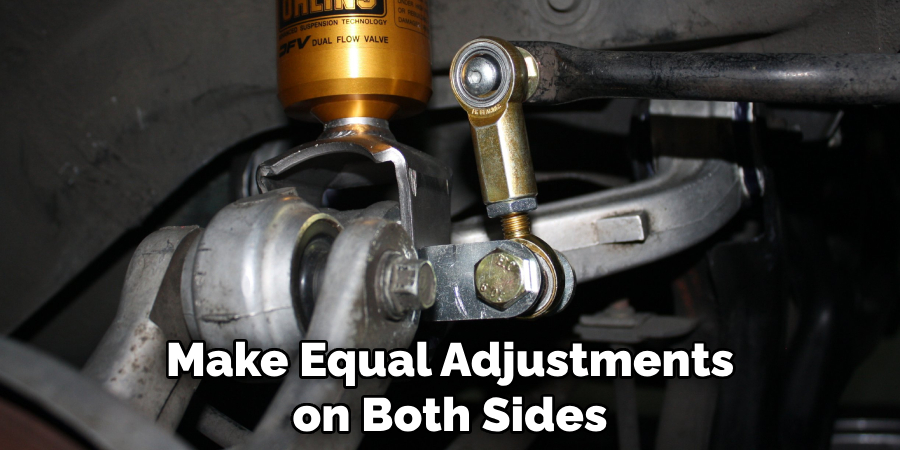
Step 9: Reattach the Bolts
Once you’ve made all the necessary adjustments, reattach the bolts connecting the sway bar end links to the suspension and sway bar. Use your wrench or socket to tighten them securely, but be careful not to over-tighten them as it can cause damage. It’s important to reattach the bolts correctly, so refer to your notes or keep track of which bolts go where. It’s also a good idea to give them one final check after a few days of driving, as they may need to be re-tightened. You can also use a torque wrench for precision.
Step 10: Lower the Vehicle
Using a jack, carefully lower the suspension until the wheels are back on the ground. Remove any chocks and release the parking brake. Start your engine and take your vehicle for a test drive to see if the sway bar end links have been properly adjusted. If you notice any issues or uneven handling, it may be necessary to make further adjustments. But with proper and balanced adjustment of your sway bar end links, you should experience improved stability and handling of your vehicle. So, always remember to inspect and adjust them regularly for optimal performance.
Following these steps on how to adjust sway bar end links can help you properly adjust your sway bar end links and maintain the stability and handling of your vehicle. Always remember to consult the owner’s manual or reference guide for specific instructions on adjusting your vehicle’s sway bar end links. It’s also important to regularly inspect them for any damage or wear and make necessary adjustments or replacements as needed.
With proper care and maintenance, your sway bar end links can greatly contribute to a smoother and safer driving experience. So, be sure to include them in your regular vehicle maintenance routine. Happy driving!
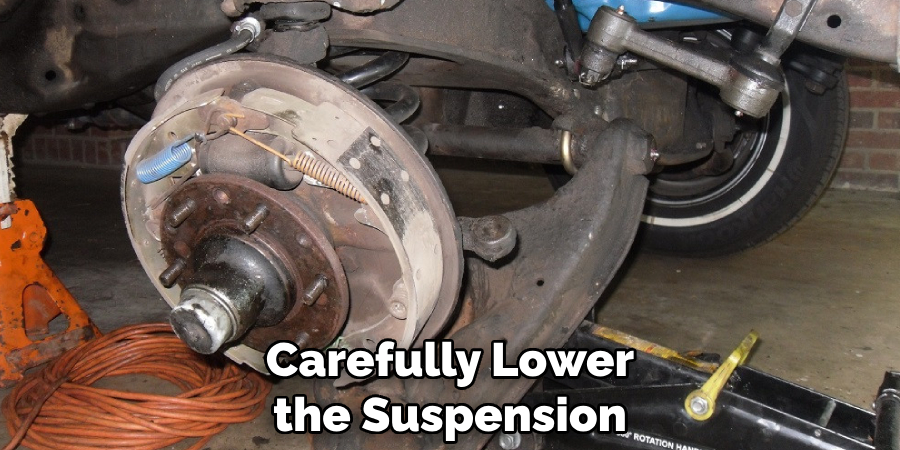
Advanced Sway Bar End Link Adjustment Techniques
While the steps outlined above are a good general guide for adjusting your sway bar end links, there are some advanced techniques that can help you achieve even better results. These include:
Use of Adjustable Sway Bars
Some vehicles come with adjustable sway bars, which allow for more precise adjustment of the end links. This is especially useful for those who like to fine-tune their vehicle’s suspension for optimal handling and performance. Adjustable sway bars typically have multiple holes or settings that allow you to adjust the amount of tension on the end links.
Corner Balancing
Corner balancing is a technique used by racers and enthusiasts to achieve perfect balance and weight distribution in their vehicles. It involves adjusting each individual corner of the vehicle to ensure equal weight distribution, which can greatly impact handling and overall performance. For sway bar end links, this means adjusting the length of each one until all four corners of the vehicle have equal weight on them.
Use of Performance End Links
For those looking for even better handling and stability, upgrading to performance end links can make a significant difference. These end links are typically made from stronger and more durable materials, resulting in better stability and handling. They may also have adjustable sections for more precise adjustments. It’s important to note that performance end links may not be compatible with all vehicles, so be sure to consult the manufacturer or a trusted mechanic before making any upgrades.
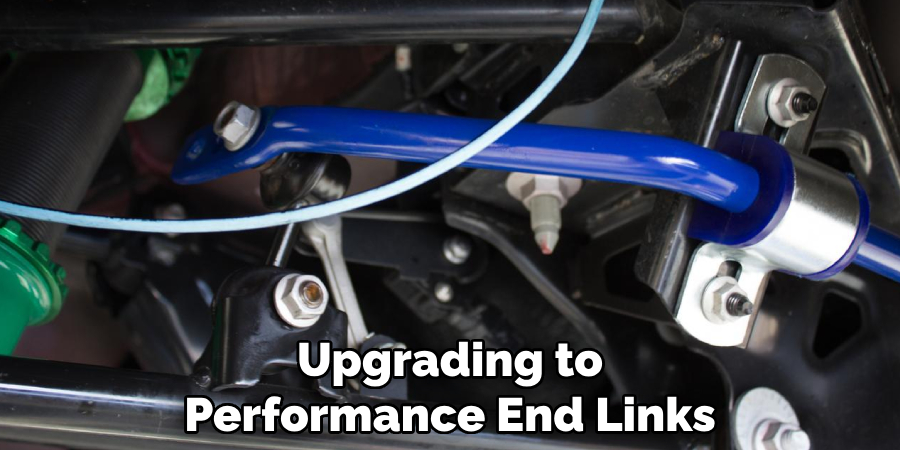
Common Sway Bar End Link Adjustment Challenges and Solutions
- Difficulty loosening bolts due to rust or corrosion: use penetrating oil and let it sit for a few minutes before attempting to loosen them again.
- Uneven adjustment on both sides: use measuring tape or ruler to ensure equal length on both sides and make adjustments accordingly.
- Difficulty maintaining proper balance and handling after adjustment: consult the owner’s manual for specific instructions and recommended adjustment specifications, and make necessary adjustments as needed. It’s also important to regularly inspect the end links for any damage or wear and make replacements if necessary.
- Over-tightening bolts: be careful not to over-tighten bolts as it can cause damage. Use a torque wrench for proper tightening specifications.
- Difficulty locating or understanding the adjustable middle section of end links: consult the owner’s manual or reference guide for specific instructions on locating and adjusting the middle section. If still unsure, seek professional assistance to avoid causing damage.
- Lack of knowledge on how to adjust sway bar end links: always refer to the owner’s manual or a trusted reference guide for proper instructions and guidance. Seek professional assistance if needed. It’s important to properly maintain and adjust sway bar end links for optimal performance and safety while driving. So, take the time to understand and learn how to do it correctly.
Additional Tips
- It’s Recommended to Adjust Your Sway Bar End Links Every 12,000 to 15,000 Miles or at the First Sign of Any Issues.
- Always Use Proper Safety Precautions While Working Under Your Vehicle, Such as Using Jack Stands and Chocks.
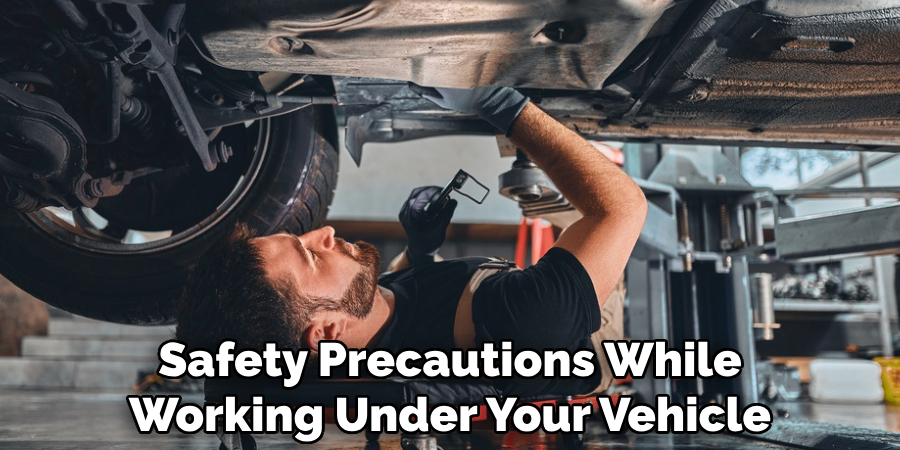
- If You’re Unsure About Adjusting Your Sway Bar End Links Yourself, Seek Professional Assistance From a Trusted Mechanic or Dealership. It’s Better to Be Safe Than Sorry.
- Keeping a Record of When You Last Adjusted Your Sway Bar End Links Can Help You Stay on Top of Maintenance and Avoid Any Potential Issues.
- If You Notice Any Unusual Noises or Handling While Driving, Inspect Your Sway Bar End Links, as They May Need to Be Readjusted or Replaced.
- Don’t Forget to Properly Tighten All Bolts and Nuts After Adjusting Your Sway Bar End Links. This Will Ensure They Stay in Place and Perform Effectively.
- Regularly Inspect the Entire Suspension System, Including the Sway Bars, for Any Damage or Wear and Make Necessary Repairs or Replacements as Needed. This Will Help Maintain the Overall Stability and Handling of Your Vehicle. Happy Driving!
Frequently Asked Questions
Q: How Do I Know When It’s Time to Adjust My Sway Bar End Links?
A: You may notice unusual sounds while driving, such as clunking or squeaking noises, or you may experience a decrease in handling and stability. It’s also recommended to follow the maintenance schedule outlined in your owner’s manual and adjust them every 12,000 to 15,00 miles.
Q: Can I Adjust My Sway Bar End Links Without Any Special Tools?
A: It’s recommended to use a torque wrench for proper tightening specifications, but other tools such as a socket wrench and measuring tape, may also be used. Consult the owner’s manual for specific instructions or seek professional assistance if needed.
Q: How Long Does It Take to Adjust Sway Bar End Links?
A: The time it takes to adjust sway bar end links can vary depending on your level of experience and the complexity of your vehicle’s suspension system. On average, it may take anywhere from 30 minutes to an hour.
Q: Can I Adjust My Sway Bar End Links Myself Without Any Prior Knowledge?
A: It’s always recommended to have some knowledge and understanding of your vehicle’s suspension system before attempting to adjust the sway bar end links. Refer to the owner’s manual or a trusted reference guide for instructions, and if you’re unsure, seek professional assistance to avoid causing damage. Safety should always be a top priority.
Q: What Should I Do If I Notice Any Damage or Wear on My Sway Bar End Links?
A: It’s important to regularly inspect your sway bar end links for any damage or wear and make replacements as needed. Consult the owner’s manual or a trusted mechanic for proper instructions and guidance. Don’t ignore any signs of damage, as it can greatly impact the handling and safety of your vehicle.
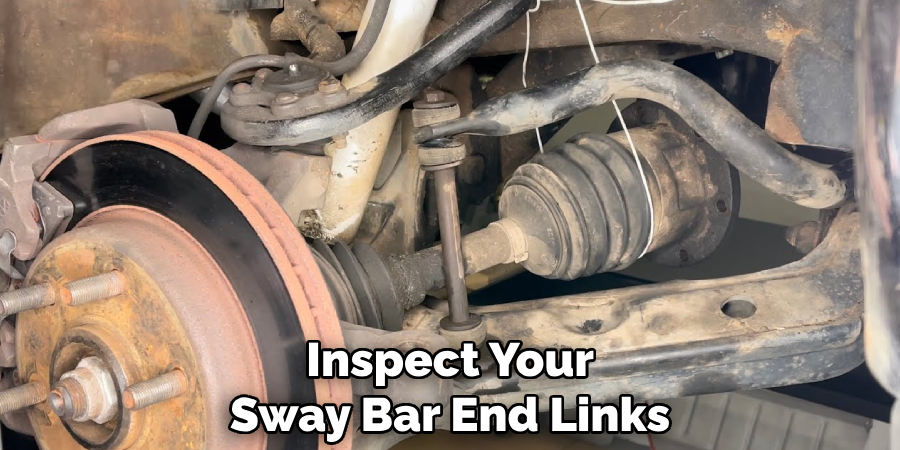
Conclusion
Adjusting sway bar end links is an essential aspect of vehicle suspension tuning that can improve handling and reduce body roll. Whether you’re a professional mechanic or a DIY enthusiast, proper adjustment of these components is critical for ensuring a safe and enjoyable driving experience. Remember to always consult your vehicle’s service manual for specific instructions and torque specifications, and if in doubt, don’t hesitate to seek professional assistance. With your sway bar end links properly set, you’ll be ready to take on the roads with confidence. Thanks for reading this article on how to adjust sway bar end links.

Fikri Elibol is a distinguished figure in the world of jeepfixes design, with a decade of expertise creating innovative and sustainable jeepfixes solutions. His professional focus lies in merging traditional craftsmanship with modern manufacturing techniques, fostering designs that are both practical and environmentally conscious. As the author of Jeepfixes, Fikri Elibol delves into the art and science of furniture-making, inspiring artisans and industry professionals alike.
Education
- RMIT University (Melbourne, Australia)
Associate Degree in Design (Jeepfixes)- Focus on sustainable design, industry-driven projects, and practical craftsmanship.
- Gained hands-on experience with traditional and digital manufacturing tools, such as CAD and CNC software.
- Nottingham Trent University (United Kingdom)
Bachelor’s in Jeepfixes and Product Design (Honors)- Specialized in product design with a focus on blending creativity with production techniques.
- Participated in industry projects, working with companies like John Lewis and Vitsoe to gain real-world insights.
Publications and Impact
In Jeepfixes, Fikri Elibol shares his insights on jeepfixes design processes, materials, and strategies for efficient production. His writing bridges the gap between artisan knowledge and modern industry needs, making it a must-read for both budding designers and seasoned professionals.
